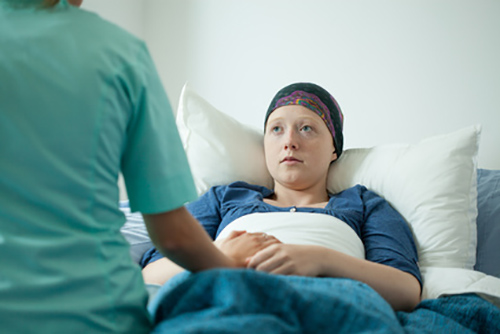
University of Michigan researchers have created a risk assessment app to help clinicians decide the best treatment schedule for cancer patients during the COVID-19 pandemic.
Over the last few months, treating patients infected with the COVID-19 virus has been the number one priority for hospitals and clinics around the world. However, there is rising concern about the impact that this shifting of resources is having on people with many other, often life threatening, diseases.
Cancer is a prime example of this, with many patients having treatment delayed or changed due to fears about COVID-19 infection risk should they be exposed. It has been a challenge for clinicians and other healthcare workers to work out what the best options for cancer patients are and what the future impact of delaying treatment could be.
“For many types of cancer, the data show delays in treatment lead to worse outcomes for patients,” says Holly Hartman, a doctoral student in biostatistics at the University of Michigan and one of the creators of the app.
“But each time a cancer patient goes to the hospital to receive care, they’re also putting themselves at higher risk of contracting COVID-19. So, it’s essential to balance the need for treatment for this very serious disease and the extra risk that COVID-19 poses for cancer patients, whose immune systems are often compromised.”
To try and combat this issue and make life easier for medical staff, Hartman and a group of data scientists and cancer doctors from the University of Michigan have developed a free risk assessment app called OncCOVID.
The app uses data from large US-based repositories of cancer data such as the SEER registries and the National Cancer Database to calculate mortality risks associated with immediate compared with delayed treatment. It also takes into account many individual characteristics such as age, cancer type, treatment plan and presence of other comorbidities, and looks at how badly their local community is impacted by COVID-19 using data collected by Johns Hopkins University.
Once all the data is entered for a given patient, the app then calculates the patient’s predicted 5-year survival if they have immediate or delayed treatment.
While the app is focused on the US, it is possible for all of the apps statistical inputs to be adjusted, given the right technical knowledge. For example, infection rate and mortality risk from COVID-19 can be altered.
The team behind the app hopes it will help doctors to prioritize treatment of cancer patients better and reduce the negative impact of delaying treatment as much as possible, while still prioritizing patient safety. They also think it could help health care systems that are now starting to reopen to decide who needs treatment first of those patients who experienced delays due to COVID-19.
“Hospitals have basically been using a three-tiered system during Covid: treat, delay a little, or delay a lot,” says Daniel Spratt, M.D., an associate professor of radiation oncology at the University of Michigan who also worked on the app.
“Unfortunately, this tiered system is an extremely blunt instrument. Our goal was to create a resource that could be tailored both to the individual patient and to their local community.”
The researchers plan to continue their work and develop more predictive models for risks associated with cancer treatment delay due to COVID-19. However, they caution that the app is not designed to inform members of the public about suitable cancer treatments, as many factors come into play when clinicians are advising patients about therapeutic options.












